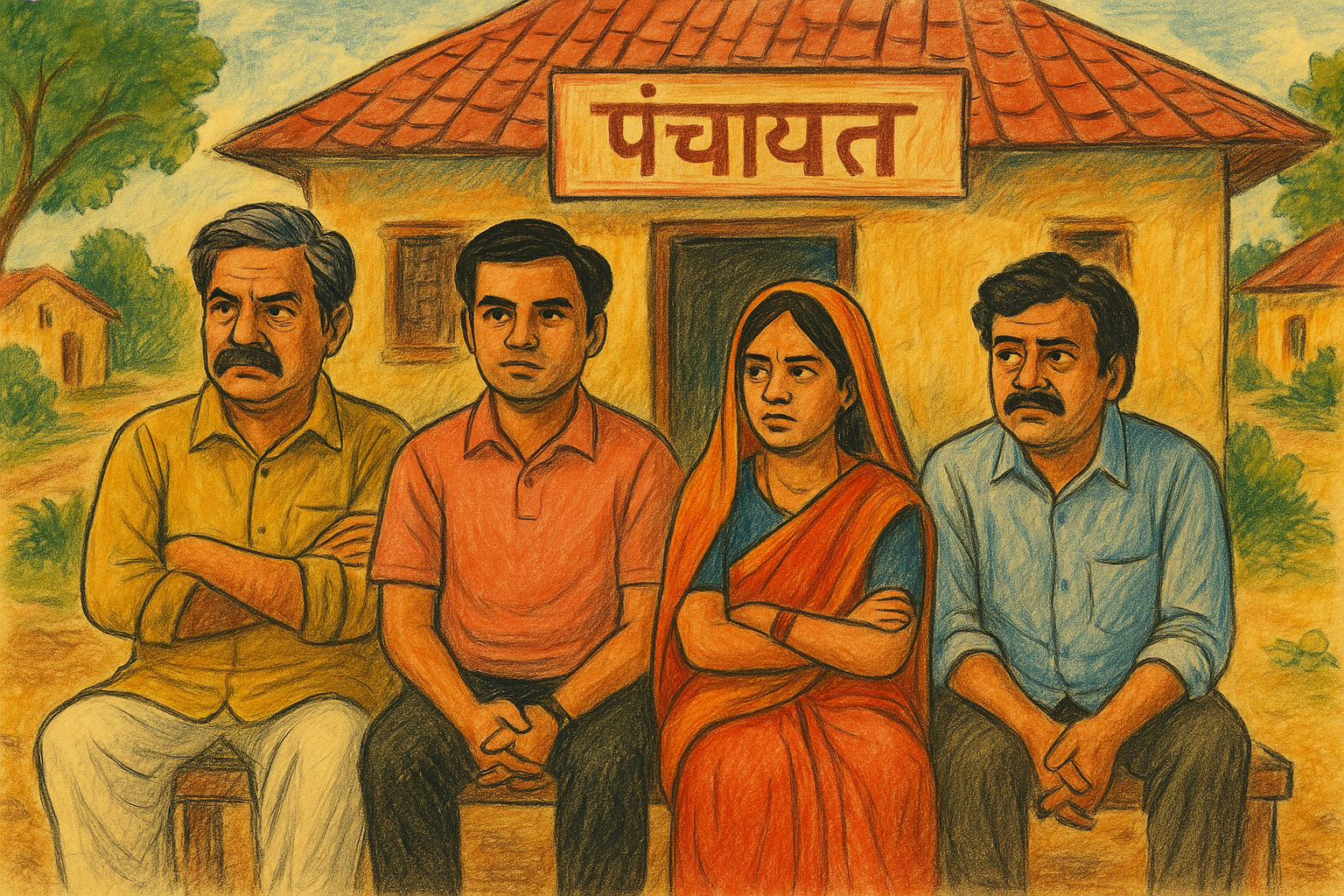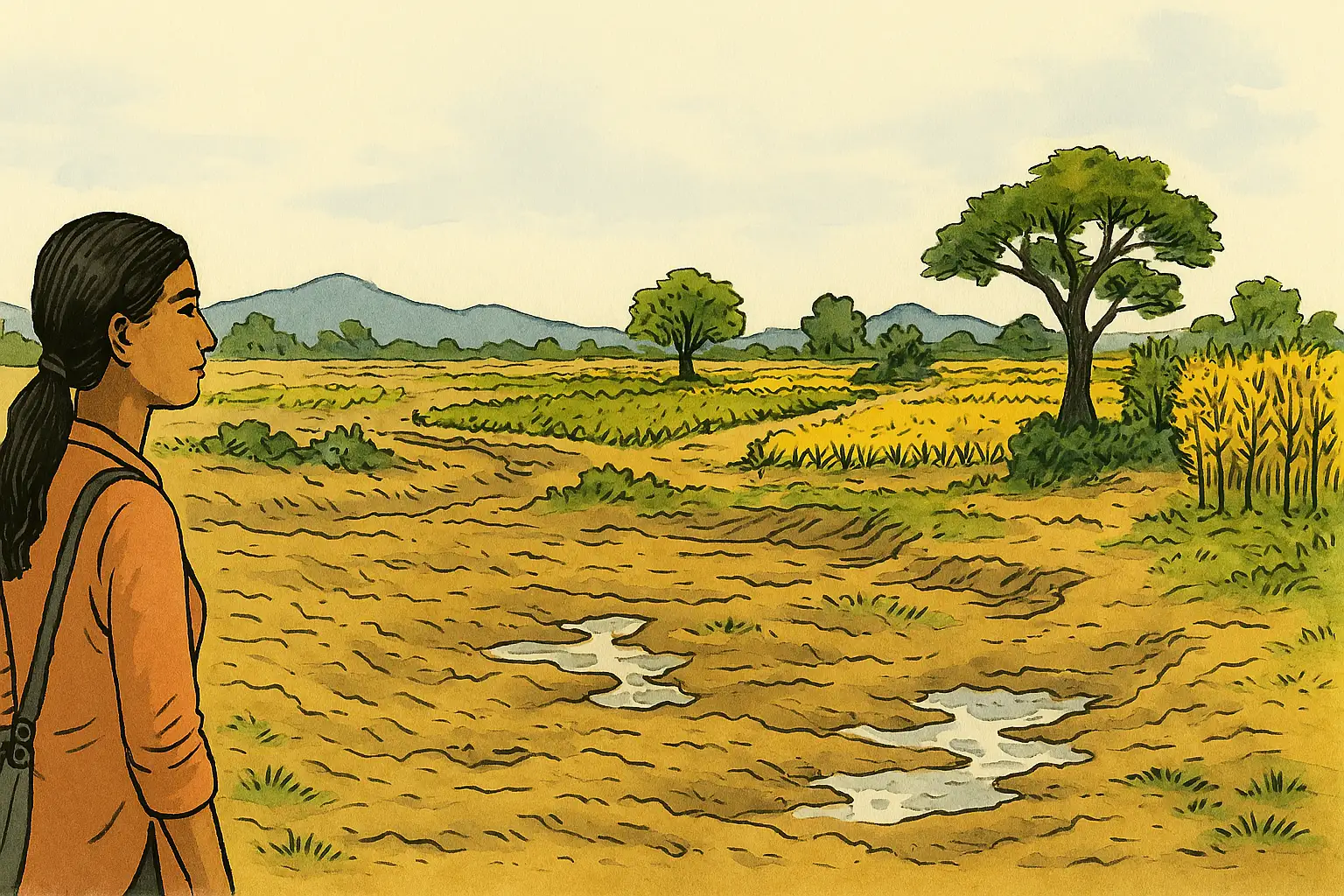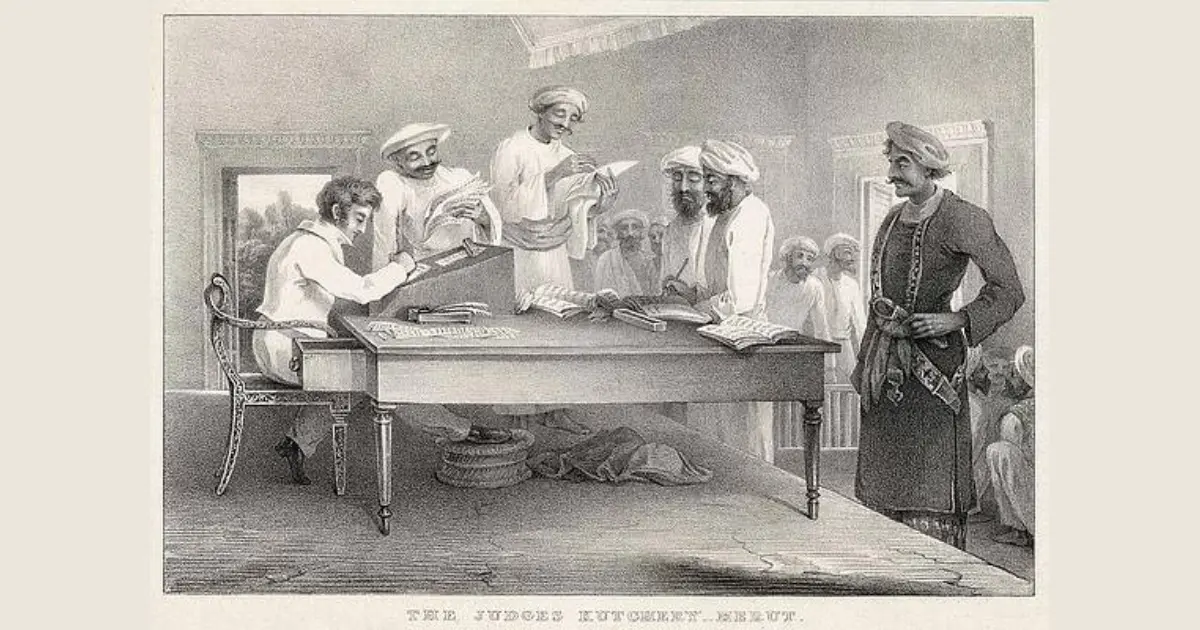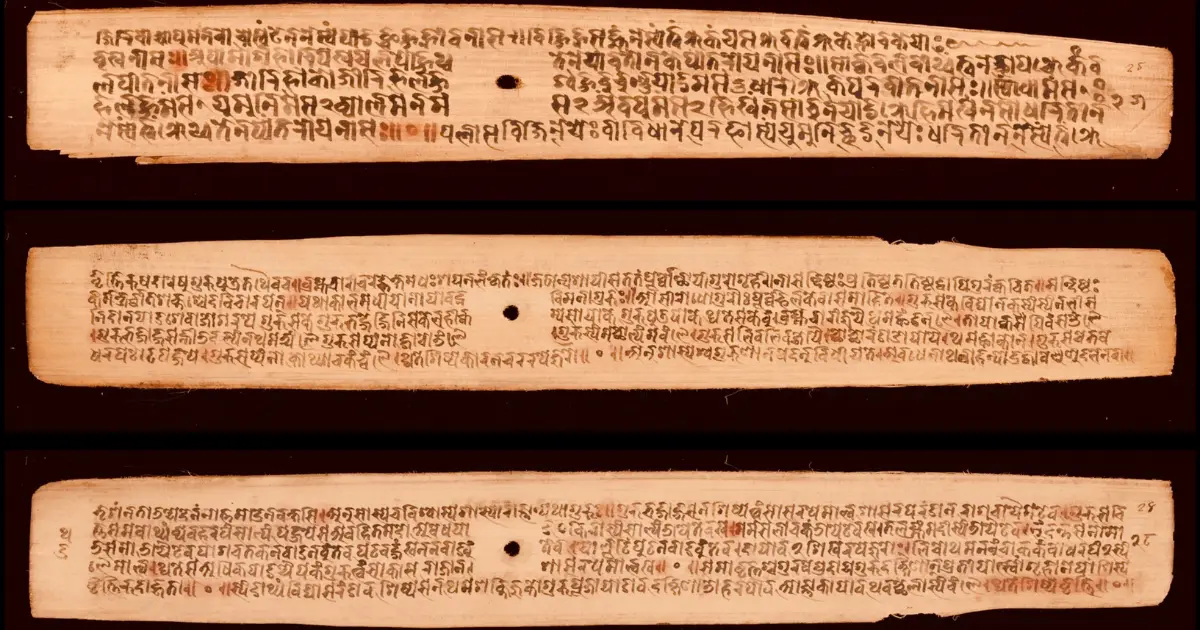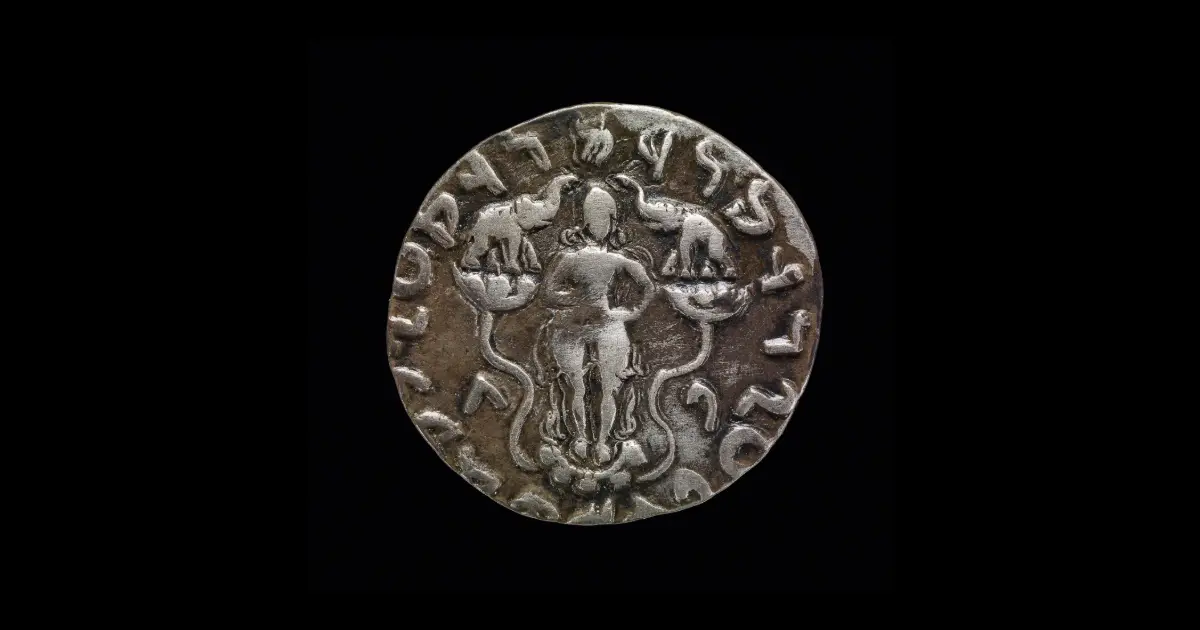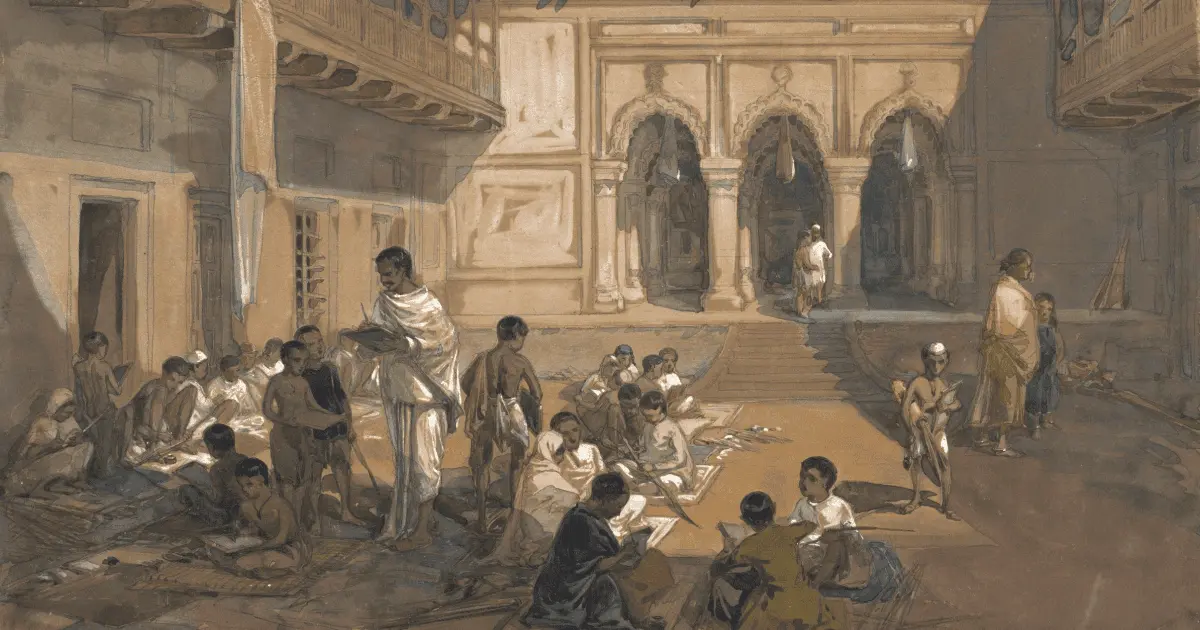For decades, the Indian village on screen has functioned less as a lived space and more as a symbolic terrain, as a site onto which the nation projects its deepest fears, fantasies, and failures. From the moral binaries of socialist cinema to the nihilism of streaming noir, rural India has rarely been allowed to narrate itself. Panchayat, in its early seasons, broke from this lineage with a quiet observational realism, but its later turn toward performance reveals the enduring pressures of urban spectatorship. To understand how the village is seen is to ask not just aesthetic questions, but political ones.
In the overcrowded landscape of Indian streaming content, Panchayat stood out. Not because it was spectacular, dramatic, or loud, but because it was honest. The series achieved what few visual texts in India have done in recent years: it humanized the rural without romanticizing it, depicted dysfunction without slipping into dystopia, and chose stillness over spectacle. In its first three seasons, Panchayat resisted the gravitational pull of violence, lust, and cynical despair that has come to define portrayals of North India’s hinterland. Instead, it gave us Phulera, a fictional village that felt real, rooted, and slow. But this slowness was not merely a stylistic indulgence. It was a profound moral and epistemic commitment, a commitment to rhythm, memory, and ambiguity.
To understand what made Panchayat exceptional, and what it eventually lost in the fourth season, we must situate it within a longer genealogy of how Indian cinema and television have imagined the village. The village has never been just a backdrop; it has been a crucible through which the Indian imagination processes both anxiety and aspiration. Since Independence, visual media have turned to the village not merely to document it, but to dramatize India’s unresolved questions about tradition, justice, development, and modernity. And yet, crucially, the village on screen has often been less mirror than myth. There have consistently been two villages in Indian media: one that needed saving, and another that needed escaping. Both were projections, not portrayals, shaped to satisfy the emotional economy of urban spectatorship.
The Progressive Gaze: Lala, Thakur, Pandit
To trace the contours of these cinematic villages, we begin with post-Independence cinema, especially from the 1950s to the 1970s. These decades were saturated with the vocabulary of socialist humanism and developmental optimism. The village, in this period, was visualized through a moral binary: the oppressed and the oppressor. Caste and class hierarchies were embodied in figures like the Thakur, the Lala, and the Pandit- stock villains who stood in for a broader system of feudal domination.
Take Do Bigha Zamin (1953). Here, the tragedy of Shambhu, the peasant, is not just his eviction but his entrapment within a larger political economy of displacement. Or Mother India (1957), where the titular character becomes an allegory for the postcolonial nation, bearing pain with stoicism, while her village bears witness to sacrifice and masculine failure. Salim-Javed’s scripts in the 1970s transposed this template to urban spaces, but the emotional core remained rural. The anger of the city’s proletariat had roots in the betrayal of the village. The loss of land, dignity, and kinship became the origin myth for cinematic rage.
Television of the late 1980s and early 1990s joined this lineage with shows like Neem Ka Ped. The series, while lyrical, leaned heavily on the motif of the doomed peasant. The village was painted as a place of poetry and pathos, but not of agency. Even when it invoked the rustic idiom or employed folk aesthetics, the moral economy remained binary. The rural was to be mourned, pitied, or redeemed - never inhabited as a site of active complexity.
It is important to acknowledge that these narratives were often animated by genuine political commitments. They responded to actual systems of violence and deprivation. But they also simplified. The village became an allegory for injustice. Its sociological density - the ways in which power was distributed, negotiated, and sometimes resisted - was flattened into melodrama. The drama of the village was externalized through spectacle; its internal tensions were rarely allowed to speak.
The Vanishing Village and Its Ghost
By the 1990s, the tectonic shifts of liberalization began to reshape the aesthetics of television and cinema. Cable TV, private channels and globalized content flows made the urban consumer the default viewer. The village began to vanish from screens. When it returned, it had mutated. No longer the moral battleground of postcolonial hope, it was now either a den of vice or a museum of nostalgia.
The crime village emerged in the form of Gangs of Wasseypur, Mirzapur, and Paatal Lok. These works abandoned the language of reform and embraced the logic of decay. Rural India was imagined as a brutal, lawless wasteland where masculinity, caste and power coagulated into nihilism. Violence was no longer a rupture in village life - it was the grammar of existence. In such portrayals, there was no space for empathy, only for spectacle. The viewer was not invited to understand the village but to gawk at its grotesqueries.
Parallel to this was the redemptive village of Swades, Lagaan, and Peepli Live. These stories offered a post-liberalization variation of the developmental fantasy. The village was broken, yes, but fixable - if only a morally upright outsider would intervene. The savior was often an NRI, a bureaucrat, or a social entrepreneur. This figure carried not just education or resources, but a civilizational burden: to enlighten the rural. Once again, the village had no interiority. It was a canvas on which urban virtue could be projected.
Both the crime village and the redemptive village erased something vital: the village as a living, breathing, self-reflexive world. Both operated within frameworks where the rural existed only in relation to the urban - as failure, as memory or as experiment. Its own cultural logic, emotional infrastructure, and historical continuity were sidelined.
Malgudi and Phulera: Imaginaries Rooted in Realism
In this landscape, Panchayat felt like a revelation. Like RK Narayan’s Malgudi Days, it invented a village to recover something lost: the everyday. Phulera, like Malgudi, was imaginary in geography but deeply ethnographic in texture. It was not idealized, but it was respected. Its people were not caricatures, but types with contradictions.
What Panchayat understood, especially in its first three seasons, was that village life is not defined by rupture but by routine. Bureaucratic absurdities, social tensions, and emotional negotiations unfolded not in crisis, but in conversation. A broken handpump was not a trivial detail; it was a node in the network of state presence, caste access, and communal patience. A wedding invitation was not just ceremonial, but a site of symbolic hierarchy.
The aesthetics of Panchayat required the viewer to recalibrate their sensory register. The drama was not in action, but in delay. Who speaks first in a meeting? Who gets offered tea and who does not? These were not background textures. They were how power was performed, contested, and legitimized.
The show marked a return to the sociology of attention. It asked not for sympathy, but for curiosity.
Sociology on Screen: Beyond Representation
Panchayat offered a methodological shift in how rural India could be visualized. It did not foreground caste, patriarchy, or governance as abstract themes. It let them emerge from the scene, space, and silence. This was not sociology in the sense of citation, but in the sense of sensibility.
Consider Brij Bhushan Dubey. At first glance, he is comic relief; the husband who unofficially occupies the Sarpanch’s seat. But this very arrangement reveals the sedimented nature of gendered power. His performance is both satire and sociology. Similarly, the complaint about a missing toilet is not just about sanitation. It is about paperwork, visibility, shame, and the moral theater of state schemes.
By focusing on such moments, Panchayat revived the legacy of Indian village studies. MN Srinivas’s theory of the dominant caste, Andre Béteille’s analysis of ritual and status, and SC Dube’s work on development and belief were not named but enacted. They became lived phenomena, not academic abstractions.
Yet, this commitment began to falter in Season 4. What was once attentive became aware. Characters started to anticipate their own popularity. Scenes were designed to affirm audience expectation rather than disturb it. The show began to mirror its success rather than its subject.
Baudrillard’s idea of simulation becomes crucial here. The village on screen was no longer mimetic of a world. It was a copy of its earlier self; a loop of references, nostalgia, and brand identity. The ethnography had been replaced by an exhibition.
Raag Darbari and the Crisis of Satire
This decline becomes starker when placed alongside Srilal Shukla’s Raag Darbari. Written in the late 1960s, it remains India’s most formidable satire of rural polity. Shukla did not seek heroes or villains. He sought systems. In Shivpalganj, nothing happened and everything happened. Files moved slowly, relationships calcified, and reform was always deferred.
What made Raag Darbari powerful was its refusal to offer resolution. It did not believe in dramatic change. It believed in drift. Power did not explode; it congealed. Its characters were not evil; they were exhausted. They were not agents of ideology, but products of routine.
The early seasons of Panchayat shared this sensibility. It too resisted the urge to moralize. But Season 4 shifted gears. Characters were rounded off, their contradictions sanded down. What had been satire became sentiment. The messiness of local politics gave way to clean emotional arcs.
The Village as Psychic and Symbolic Space
Beyond its sociology, the village must also be read as a psychic space. For Sudhir Kakar, the Indian village encoded intergenerational patterns of shame, longing, and repression. These were not merely psychological effects. They were institutionalized through ritual, kinship, and memory.
Ashis Nandy took this further. He argued that the village was not a pre-modern space to be transcended. It was a counter-modernity, a place where time, ethics, and emotion functioned on terms alien to the rationalist state. The village held onto values like hospitality, ambiguity, and silence. These were not signs of backwardness. They were alternative epistemologies.
Panchayat, at its height, accessed this symbolic register. It treated the village not just as a geographic location, but as a moral ecosystem. It showed how governance happened through gesture, how power was mediated by gossip, and how memory shaped legitimacy. The show did not shout its politics. It embedded them in form.
But in chasing popularity, it began to smooth over contradiction. It started performing village life instead of inhabiting it. In doing so, it returned to the trap it had once escaped: the village as a pleasing fiction.
Conclusion: Toward an Ethics of Seeing
To portray the village with integrity is to refuse caricature. It is to accept that rural life is slow, layered, and difficult to decode. It does not lend itself easily to drama. It resists closure. It demands that the viewer participate not just as a spectator but as a student.
Panchayat initially honored this ethic. It offered an antidote to spectacle. It chose silence over climax, texture over trope. But that vision has proven hard to sustain. As success grows, so do the pressures of legibility. Stillness is hard to monetize.
The village, however, remains. It continues to negotiate caste, kinship, aspiration, and governance. It continues to function not as a relic but as a reckoner. It continues to speak.
And we must learn to listen. Not with condescension. Not with nostalgia. But with attention. And care.
Endnotes
- Bimal Roy, Do Bigha Zamin, Hindi film, 1953.
- Mehboob Khan, Mother India, Hindi film, 1957.
- Rahi Masoom Raza, Neem Ka Ped, Doordarshan, 1991.
- Anurag Kashyap, Gangs of Wasseypur, Hindi film series, 2012.
- Excel Entertainment, Mirzapur, Amazon Prime Video, 2018–present.
- Avinash Arun and Prosit Roy, Paatal Lok, Amazon Prime Video, 2020.
- Ashutosh Gowariker, Lagaan, Hindi film, 2001.
- Ashutosh Gowariker, Swades, Hindi film, 2004.
- Anusha Rizvi, Peepli Live, Hindi film, 2010.
- R. K. Narayan, Malgudi Days, directed by Shankar Nag, Doordarshan, 1986.
- M. N. Srinivas, Social Change in Modern India (Berkeley: University of California Press, 1966).
- André Béteille, Caste, Class and Power: Changing Patterns of Stratification in a Tanjore Village (Berkeley: University of California Press, 1965).
- S. C. Dube, Indian Village (London: Routledge, 1955).
- Jean Baudrillard, Simulacra and Simulation, trans. Sheila Glaser (Ann Arbor: University of Michigan Press, 1994).
- Srilal Shukla, Raag Darbari (New Delhi: Rajkamal Prakashan, 1968).
- Sudhir Kakar, The Inner World: A Psycho-Analytic Study of Childhood and Society in India (Delhi: Oxford University Press, 1978).
- Ashis Nandy, The Intimate Enemy: Loss and Recovery of Self under Colonialism (Delhi: Oxford University Press, 1983).
